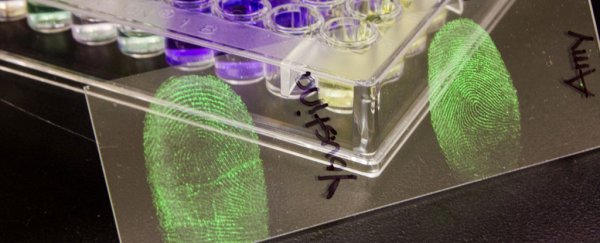Using fingerprints to identify individuals is a technique that's been around for longer than you might think - it was first used in a crime-solving capacity in the middle of the 19th century. Since then, identification processes and fingerprint databases have become much more sophisticated, and now a new method is being tested that can tease out much more information from a single print.
The new technique can tell whether the individual is male or female, and it can spot recent drug use and whether or not the person has recently been in contact with guns and explosives. Each little bit of extra data investigators can get from a print can make a huge difference in an investigation - imagine being able to discount all women from your enquiries right at the start of a murder case, thanks to just one print, or being able to focus on men with a smoking habit.
The new fingerprint powder has been developed by technology company ArroGen Group, and it contains sub-micron particles that pick up amino and fatty acids as well as the shape of the print itself with the aid of a mass spectrometer. This scans the print with a laser, particles in the powder are vaporised and ionised, and a molecular profile appears.
The amount of information that can be teased out depends on the level of compounds in the print, but results can be obtained up to a month after the print is left (and the team is working on increasing this to a year).
Several law enforcement agencies are said to be currently testing out ArroGen's new technology, but it's not just police work where the benefits might be seen - airport security guards could use a fingerprint test to check for recent contact with explosives, for example, or pilots could be tested for recent drug use. Further down the line, ArroGen is hoping to be able to use its finely tuned procedures to create full prints out of partial ones, as the trail of the chemical residue could be used to fill in gaps in the fingerprint map.
The official name for the process is Fingerprint Molecular Identification (FMID), and it's likely that you'll be hearing a lot more about it in the years to come. "We've increased very significantly the amount of data that can be taken from a crime scene to help support law enforcement's hypothesis about how a crime occurred or did not occur," ArroGen Chief Operations Officer Mark Dale explained to Popular Mechanics.
